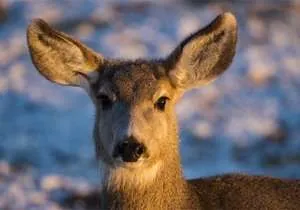
Earlier this week, U.S.Fish and Wildlife Service (Service) fisheries staff made an exciting discovery:Arctic grayling were found near the spring head of Elk Springs Creek in Montana. This marks the second consecutive year these unique western fish were recorded in this location, where natural spawning has not happened in decades! The creek is located on Red Rock Lakes National Wildlife Refuge near the state’s southwestern corner.
A particularly encouraging observation was the capture of a reproductively mature (“ripe”) female grayling. Her presence indicates local habitat conditions are amenable to supporting successful reproduction for these rare fish.
The finding also provides evidence that previous and ongoing conservation efforts, which focus on restoring Elk Springs Creek, have successfully re-established historic use of the stream by wild spawning grayling. Spawning season has just begun (it generally lasts from early to late May), and biologists are hopeful they will find even more grayling inhabiting these waterways.
From 1898 through 1908, the United States Fish Commission (a predecessor of the Service) harvested 33 million grayling eggs from Elk Springs Creek to recover grayling in their historic ranges across the United States. These recent surveys indicate Elk Springs may once again become a significant spawning stream for this imperiled, yet improving fish species in Montana.
This Upper Missouri River population in Montana is 500 miles south of the next most southern population, which is in the Canadian Province of Saskatchewan. Arctic grayling need cold water, normally found closer to the Arctic. (The species remains extinct in Michigan, the only other location in the lower 48 states where a distinct population historically existed. Arctic grayling are also found in the wild in Alaska.)
The Service wishes to thank all those who have helped in researching why grayling stopped using Elk Springs Creek and how we might encourage them to return and thrive well into the future. Participating recovery partners over the years include Montana Fish, Wildlife & Parks Fisheries biologists and managers; fisheries staff of the Montana Fish and Wildlife Conservation Office; D.C. Booth Historic National Fish Hatchery and Archives; Ennis National Fish Hatchery staff; students from Montana State University and University of Montana (Western); refuge volunteers; The Nature Conservancy; the blasting team from Beaverhead-Deerlodge National Forest; USFWS Partners for Fish and Wildlife program; the Arctic Grayling Recovery Program; the Centennial Valley Association; Miller Recreational Construction; and The Red Rock Lakes National Wildlife Refuge’s Friends group.
Learn more about fish migration and dozens of other native North American fishes that benefit from conservation, habitat restoration, and fish passage efforts across the United States.




